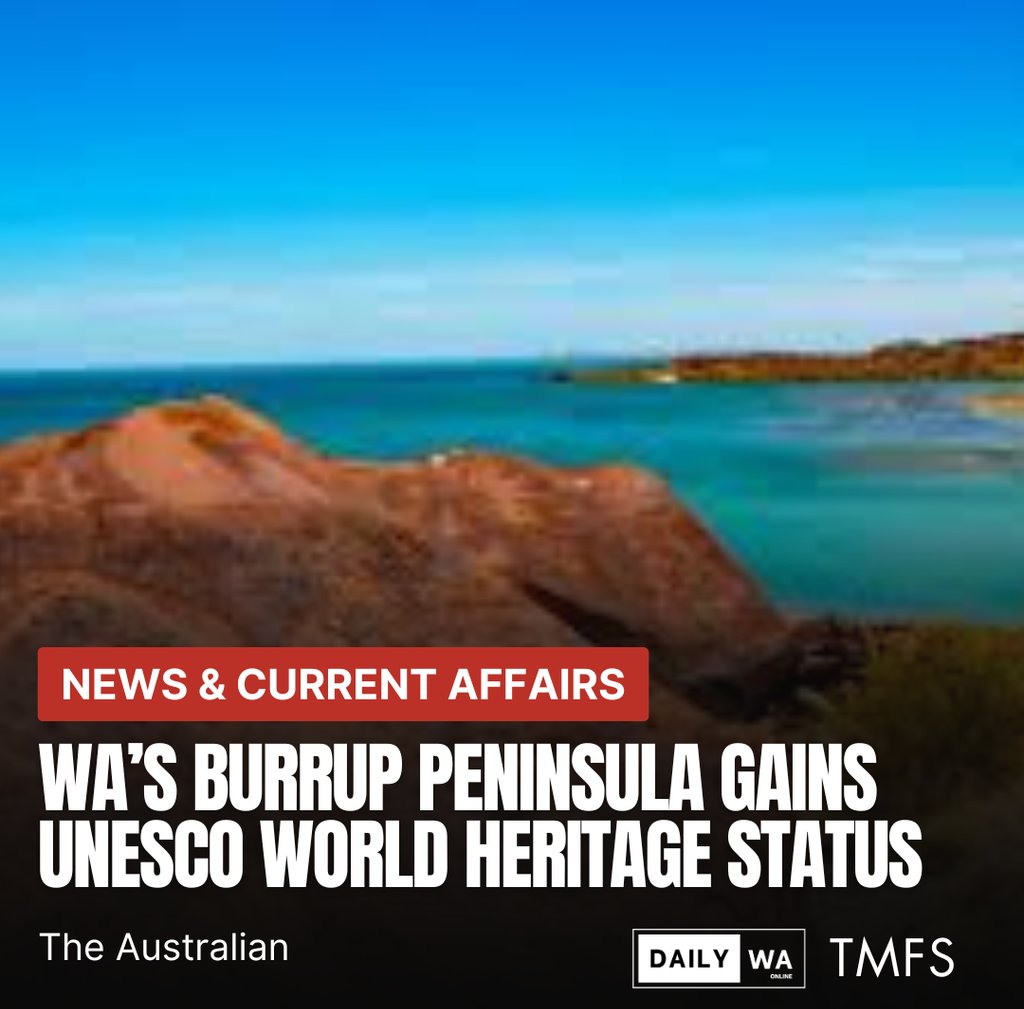A Sacred Legacy Recognized: WA’s Burrup Peninsula Achieves UNESCO World Heritage Status
Western Australia’s Burrup Peninsula has officially been inscribed on the UNESCO World Heritage List, honoring its extraordinary Aboriginal rock art, cultural heritage, and environmental significance and reaffirming the global importance of protecting one of the oldest living cultural landscapes on Earth.
NEWS & CURRENT AFFAIRS


The red rocks of the Burrup Peninsula, known to Traditional Owners as Murujuga, have whispered stories of humanity for tens of thousands of years. Now, those stories have gained global recognition. In a historic announcement reported by The Australian, the United Nations Educational, Scientific and Cultural Organization (UNESCO) has officially granted World Heritage status to the Burrup Peninsula — a monumental acknowledgment of its spiritual, artistic, and cultural significance.
The listing elevates Murujuga into the ranks of the world’s most revered heritage sites, joining landmarks such as Uluru-Kata Tjuta and the Great Barrier Reef. For the Ngarda-Ngarli Traditional Owners, it marks both a moment of pride and a renewed call for vigilance in safeguarding the landscape that carries their ancestors’ voices.
A living gallery of human history
Home to more than one million ancient rock engravings, the Burrup Peninsula holds one of the world’s largest and oldest collections of petroglyphs. These carvings chronicle over 50,000 years of human presence, depicting extinct species, ceremonial practices, and changing environments — offering a continuous record of cultural and ecological evolution.
The UNESCO committee described Murujuga as an “unparalleled cultural landscape” that demonstrates the deep time continuity of Indigenous connection to land and sea. Its intricate rock art not only captures history but also encodes knowledge systems about survival, navigation, and spiritual balance.
For generations, Aboriginal custodians have protected these stories through ceremony and care. Their advocacy, often spanning decades, culminated in this recognition — transforming local stewardship into global acknowledgment.
Balancing heritage and industry
While the inscription is a triumph for heritage preservation, it also brings renewed focus to the tensions between conservation and industrial development. The Burrup Peninsula sits adjacent to major gas and chemical processing facilities, making it a complex crossroads of culture, commerce, and climate.
Environmental and cultural advocates have long warned that industrial emissions, construction, and pollution threaten to degrade the petroglyphs through acid rain and micro-erosion. Studies have suggested that rising acidity in the air could alter the rock’s surface chemistry — slowly erasing carvings that have survived millennia.
UNESCO’s decision, therefore, carries both symbolic and practical weight. It enshrines international oversight over the peninsula’s management, requiring stringent environmental monitoring, collaboration with Traditional Owners, and reporting obligations to ensure long-term protection.
For Western Australia, this recognition challenges policymakers and corporations to redefine what progress looks like. True development must now mean safeguarding heritage as much as advancing infrastructure.
Cultural leadership and reconciliation
The inscription of Murujuga also represents a milestone in Australia’s journey toward truth-telling and reconciliation. By formally recognizing the site’s cultural depth, UNESCO amplifies Indigenous voices that have long called for respect, co-governance, and the protection of sacred knowledge.
Murujuga Aboriginal Corporation (MAC), which has led heritage management on behalf of Traditional Custodians, described the decision as a “global acknowledgment of a story that began here before history began.” The listing strengthens the corporation’s ability to participate in decisions that affect both land use and cultural preservation.
It also reinforces the principle that First Nations leadership is essential in defining and managing heritage. The rock art of Murujuga is not merely an artifact of the past — it is a living archive that continues to guide identity, ceremony, and intergenerational learning.
A world watching
UNESCO’s endorsement draws global attention to the interconnectedness of culture, environment, and identity. It reminds the world that heritage is not static — it must evolve through active care, community participation, and sustainable policy.
In an era when development pressures are intensifying, Murujuga’s recognition sends a powerful message: cultural endurance is as vital to humanity as economic ambition. By listening to the land, Australia demonstrates that progress need not erase the past — it can instead be guided by it.
A legacy for generations
For Western Australia, the World Heritage listing of the Burrup Peninsula is more than a title — it is a commitment to continuity. It asks present generations to act as guardians, ensuring that the carvings, stories, and spirits of this land remain intact for those yet to come.
At TMFS, we believe recognition must lead to responsibility. This achievement challenges us all to reimagine growth not as expansion, but as balance — between culture and commerce, memory and modernity.
The Burrup Peninsula now stands as a symbol of resilience and reverence — proof that when heritage is honored, humanity moves forward with deeper purpose.
All rights belong to their respective owners. This article contains references and insights based on publicly available information and sources. We do not claim ownership over any third-party content mentioned.
